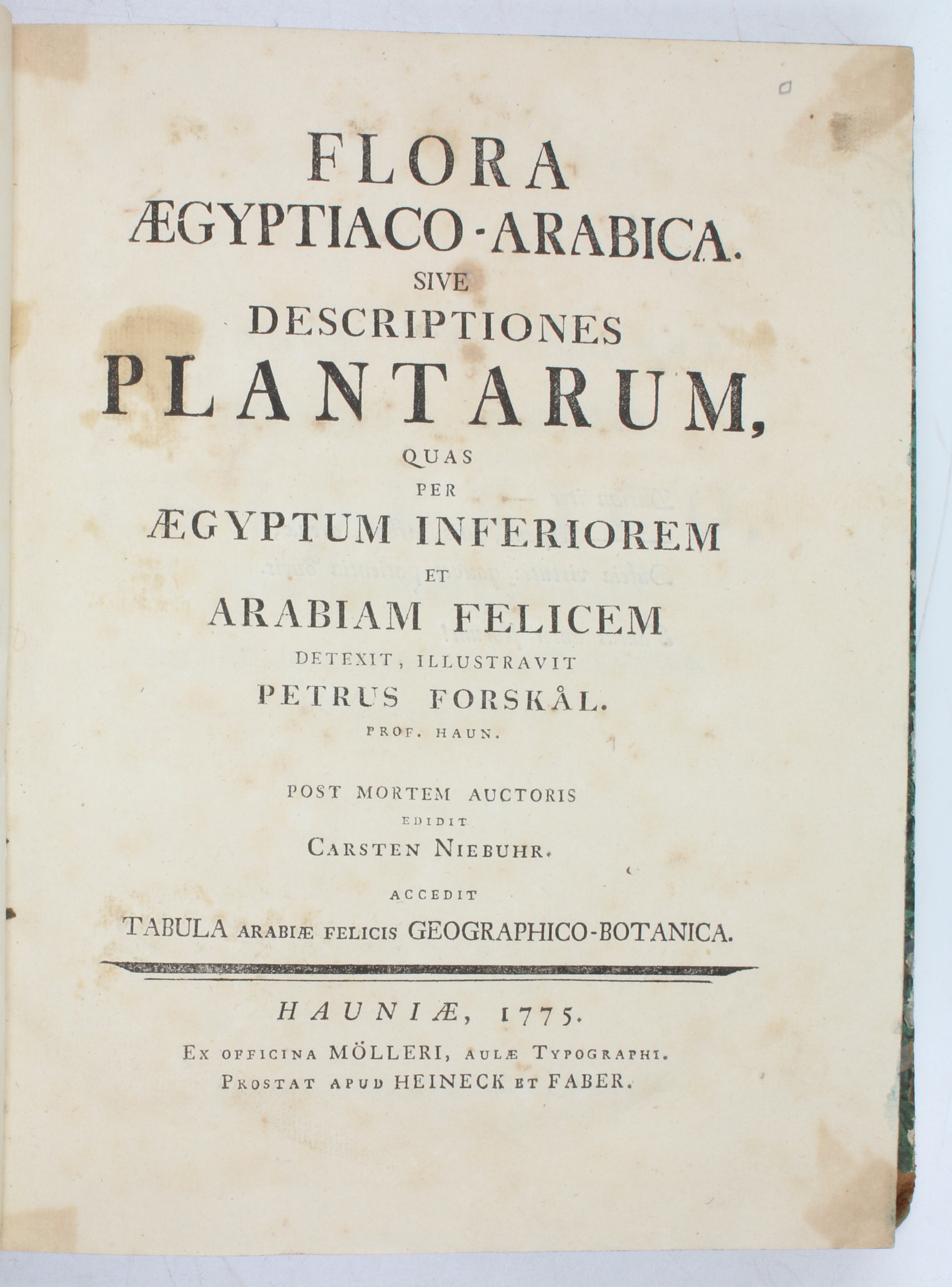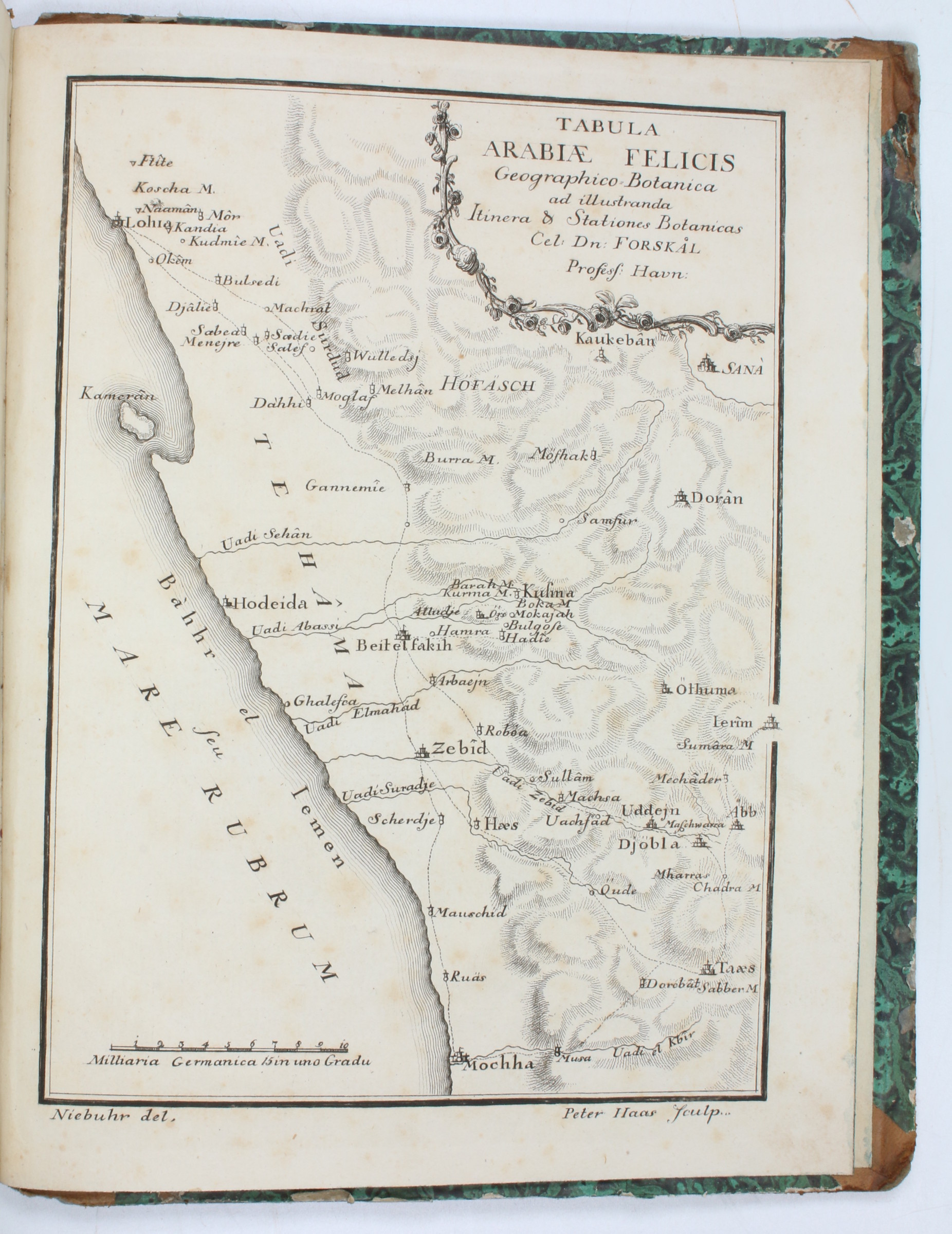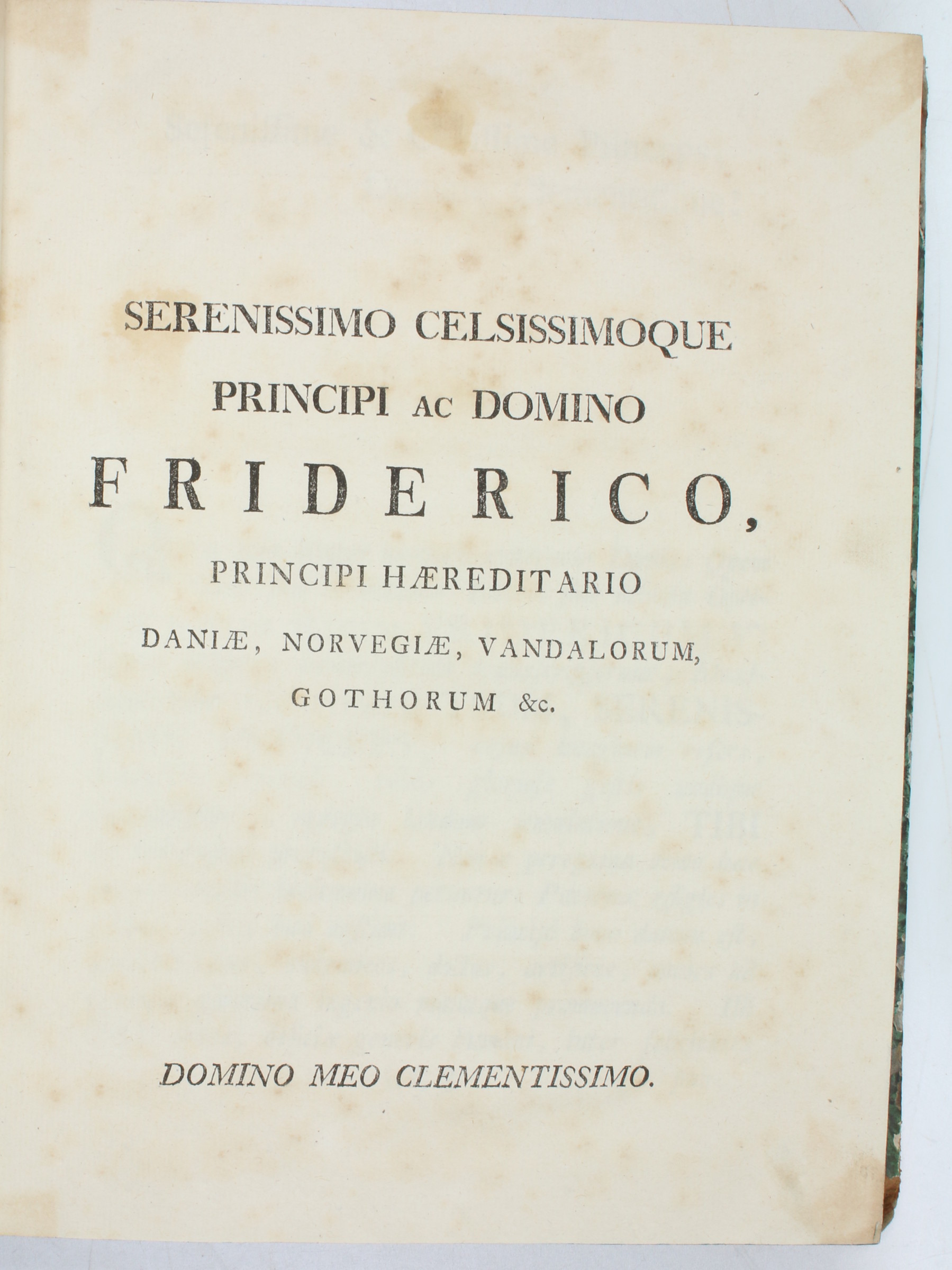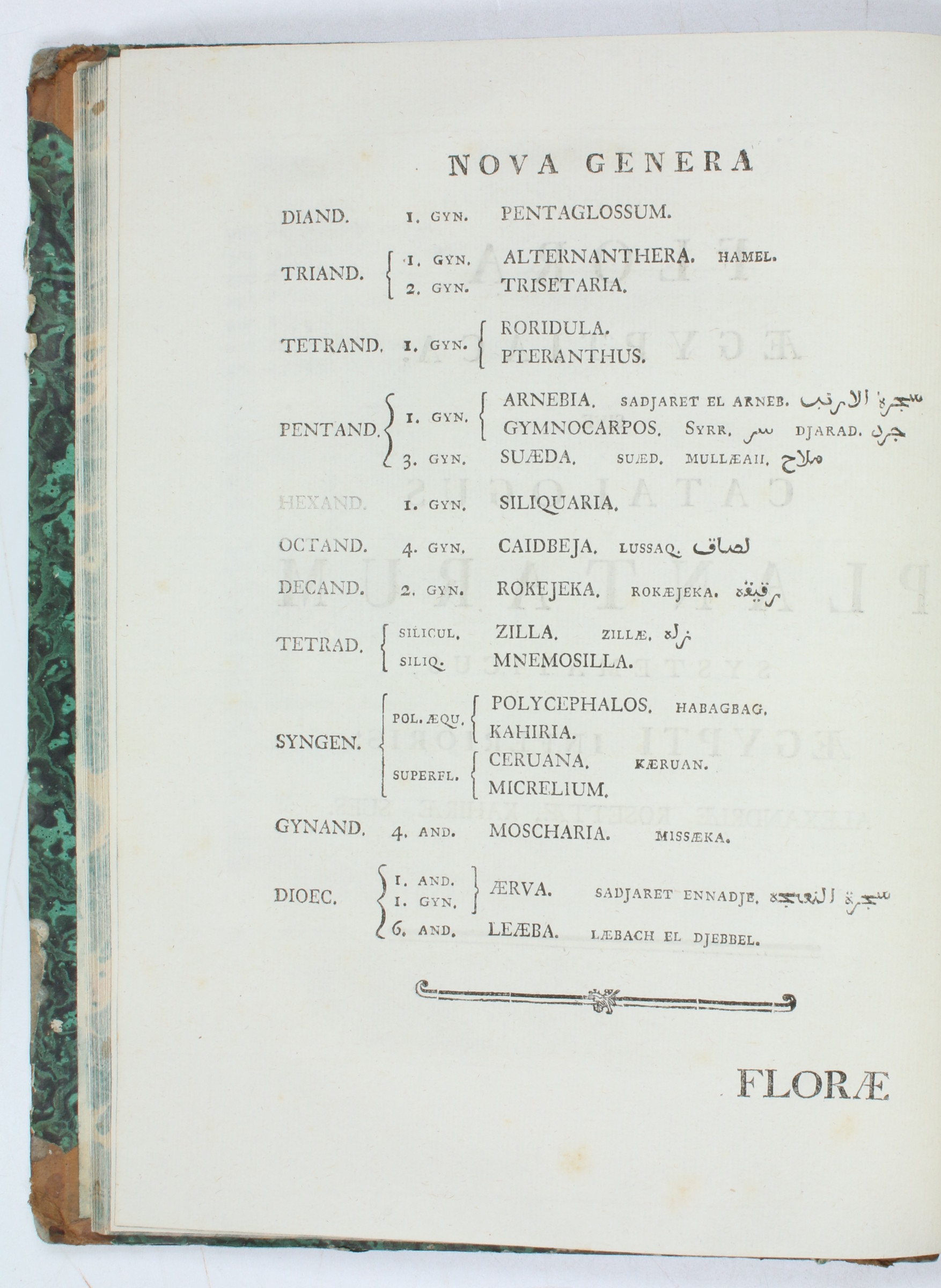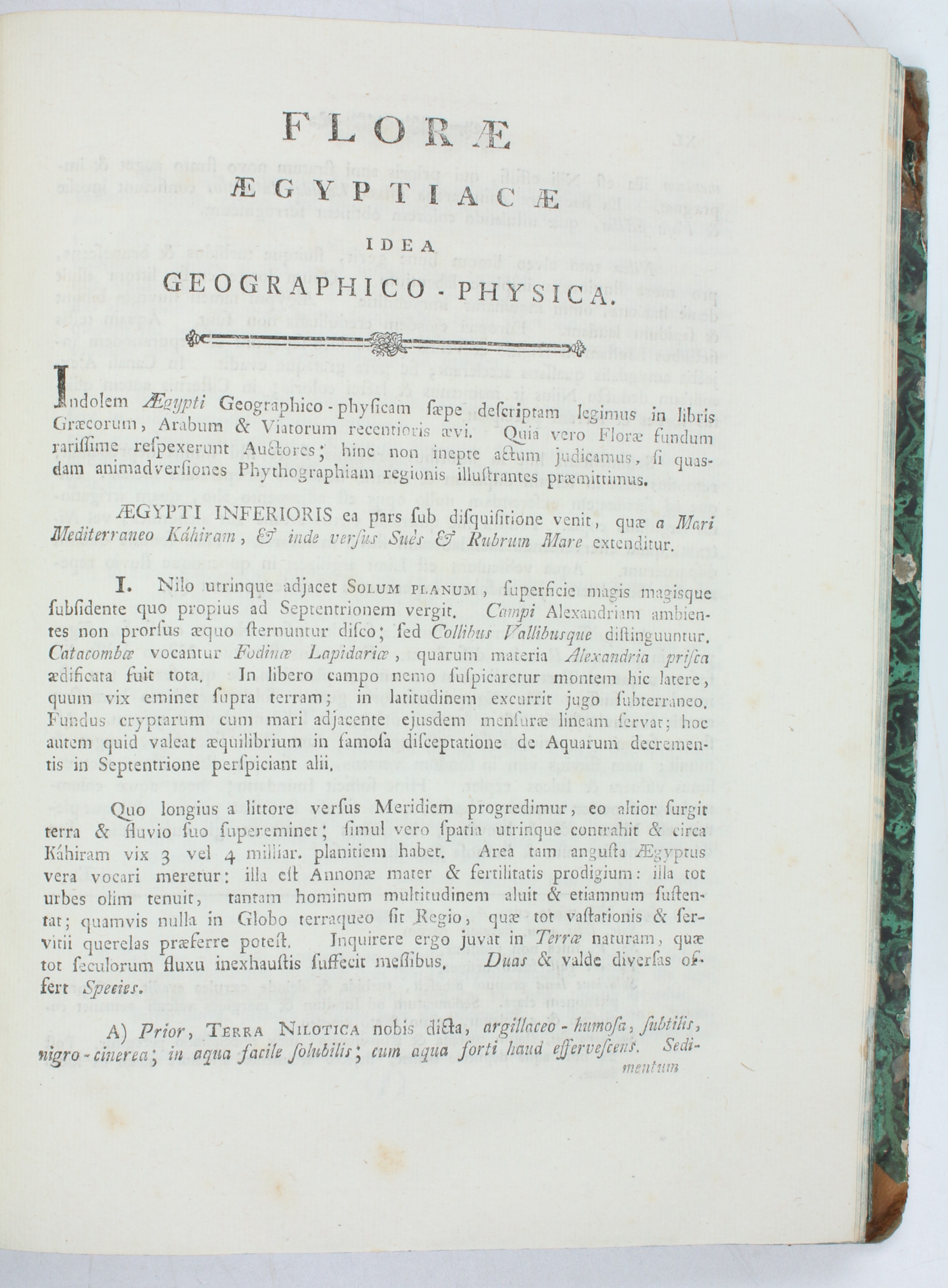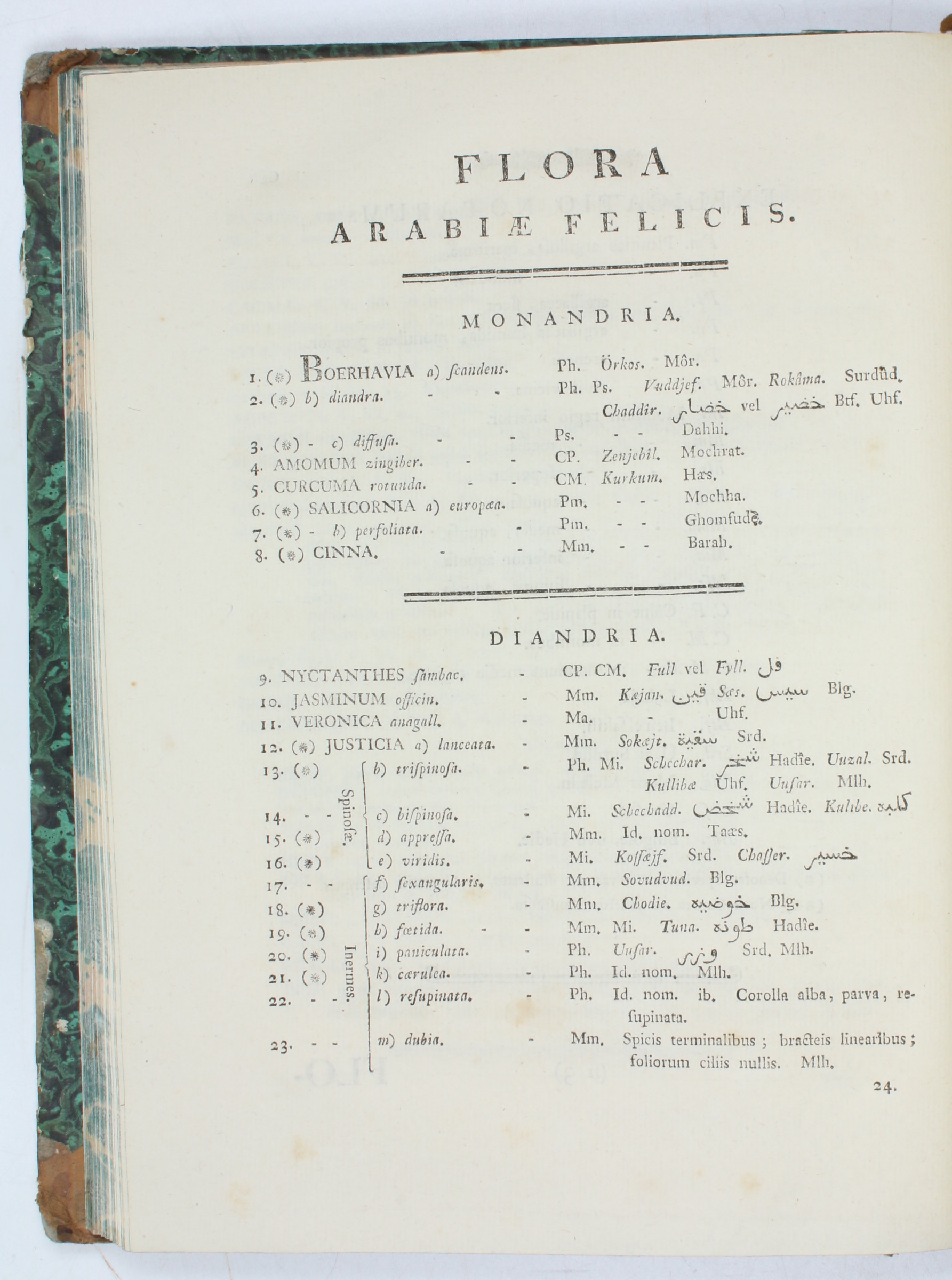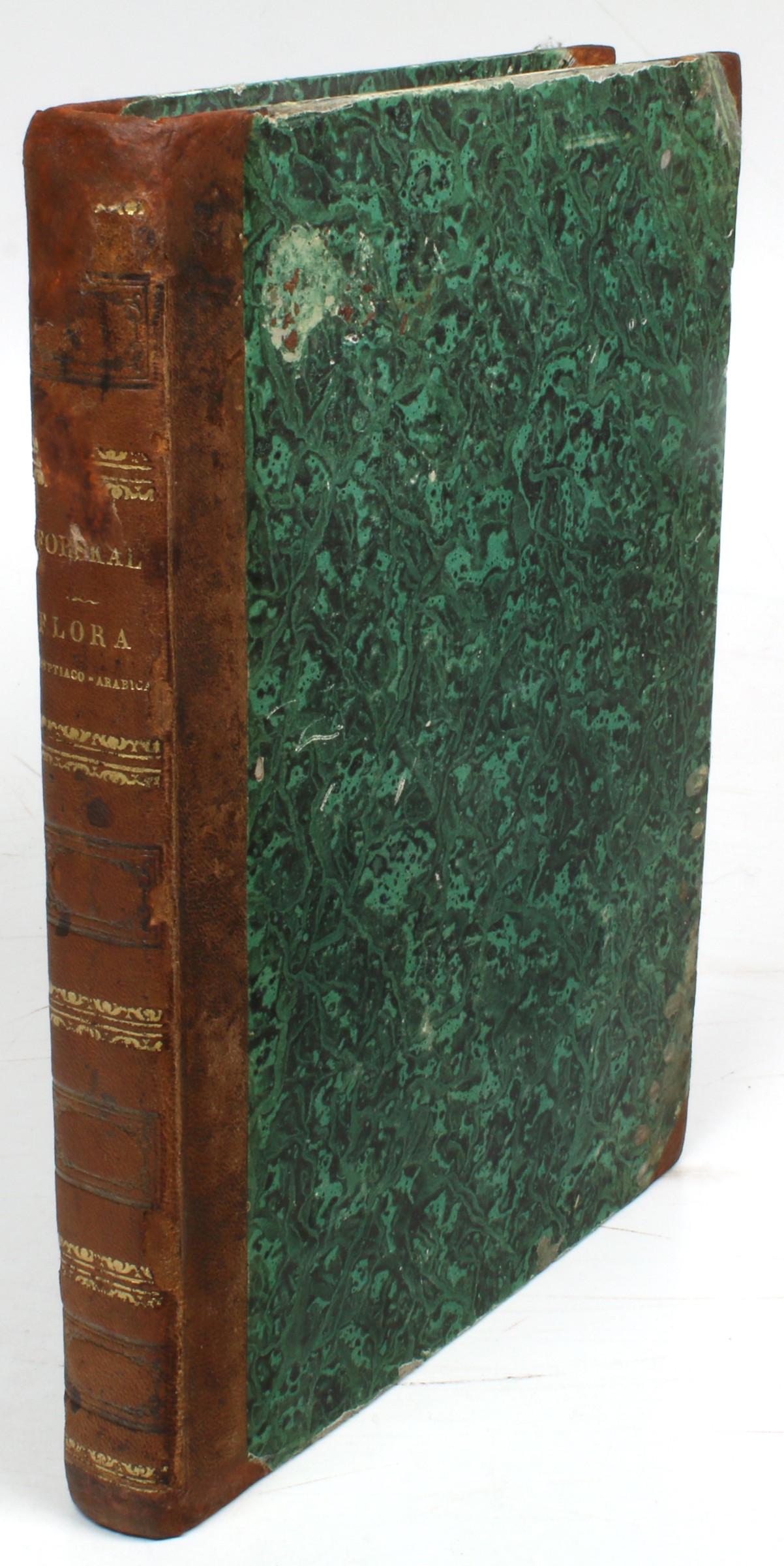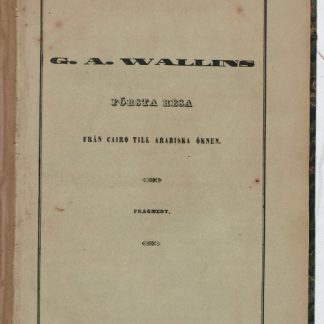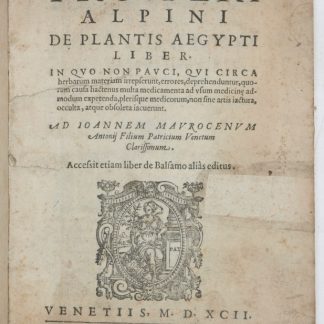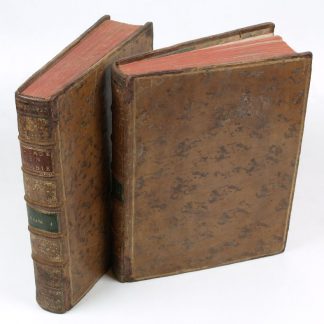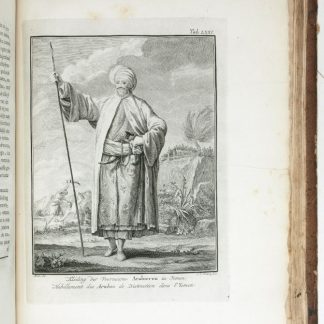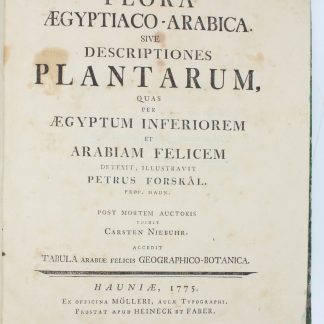The first botanical description of many Arabian plants: a pioneering work on the flora of Egypt and the Arabian Peninsula
Flora aegyptiaco-arabica. Sive descriptiones plantarum, quas Aegyptum inferiorum et Arabiam felicem.
4to (245 x 190 mm). 32, CXXVI, (2), 219, (1) pp. Complete but irregular pagination. With full-page engraved map of part of Yemen, drawn by Niebuhr and engraved by Peter Haas. 19th century half calf over green marbled boards. All edges marbled, title in gilt on spine.
€ 9,500.00
First edition of a "pioneer work by the great botanist Forskål which substantially increased the knowledge about the vegetation in the areas he visited. The author proposed 50 new genera, half of which are still valid" (Hünersdorf). The Swedish botanist Peter Forsskål (1732-1763), a brilliant pupil of Linnaeus, was part of the famously doomed Royal Danish expedition to Arabia 1761-1767. Despite his success in studying Arabic and collecting and recording numerous botanical and zoological specimens, all but one of Forsskål's party perished; Forsskål himself contracted malaria and died in Yemen at only thirty-one. The sole survivor was the group's cartographer, Carsten Niebuhr (1733-1815), who returned to Sweden and published Forsskål's meticulous notes, preserved in this volume, which describe a staggering number of Arabian plants for the first time in modern scientific terms. Forsskål was also known for using local Arabic terms for plants and animals in assigning them Latin names. Many Arabic terms are listed alongside botanical descriptions in this volume as well, appearing in both Latin and Arabic scripts. Among these are coffee and the drug plant qat (Catha edulis). Indeed, Forsskål and Niebuhr were the first Europeans to taste the qat. In a note added to his description, Forsskål describes the cultivation and uses of the drug, observing how the Arabs chewed the green leaves to stay awake all night (p. 64). The volume closes with one of Niebuhr's maps, showing the Western side of the Arabian Peninsula, today Saudi Arabia, as it was in the 1760s.
Light wear to binding, professionally repaired, light browning to interior, otherwise well preserved.
Pritzel 2969. Hünersdorf, Coffee, pp. 517-518. Stafleu & Cowan 1819. Cf. I. Friis, "Coffee and qat on the Royal Danish expedition to Arabia", in: Archives of Natural History, vol. 42, No. 1 (April 2015), pp. 101-112.

